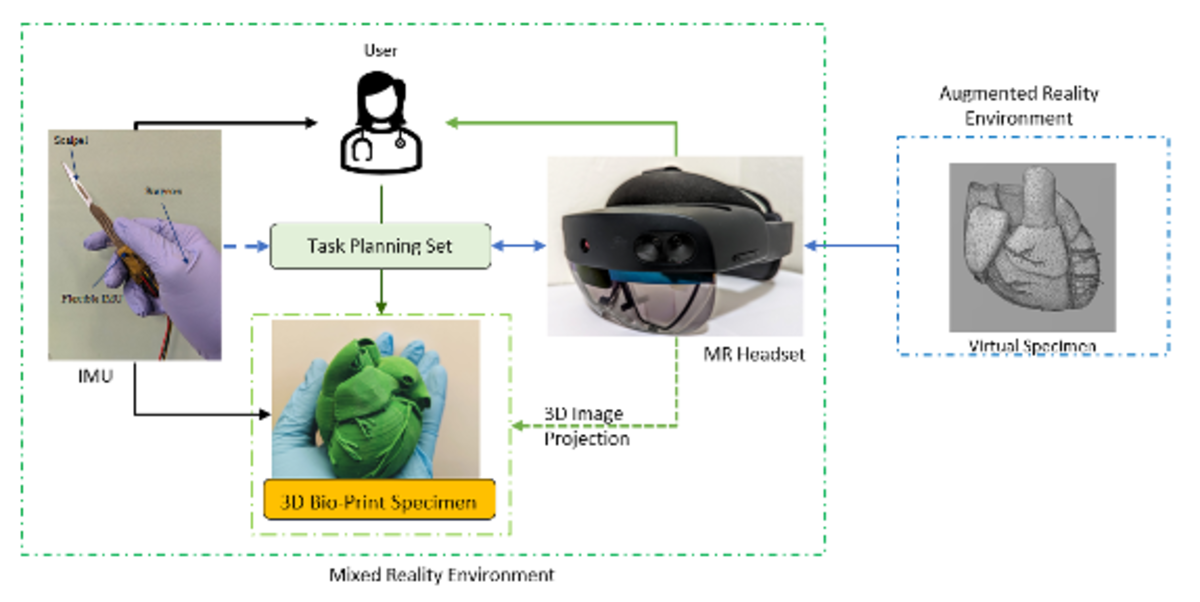
A Mixed Reality System Combining Augmented Reality, 3D Bio Printed Physical Environments and Inertial Measurement Unit Sensors for Task Planning
Successful surgical operations are characterized by preplanning routines to be executed during actual surgical operations. To overcome the lack of dynamism and blood of cadavers and lack of haptic interaction with Virtual Reality (VR), this work provides a unified solution called the Mixed Reality Combination System (MRCS). MRCS is composed of three components:
- Enabling user navigation in confined spaces using an inertial measurement unit sensor attached to a user’s tool during task execution;
- Augmented Reality (AR) to stream imagery in the form of arcuate 3D images of the human body to a user’s field of view to assist with task execution;
- To provide a platform for haptic feedback from user actions during task execution via a 3D bio print made of collogen.
A human subjects study that compares the task execution outcomes between groups that have either been or not been exposed to the MRCS training shows an improvement in performance when using the MRCS platform.

